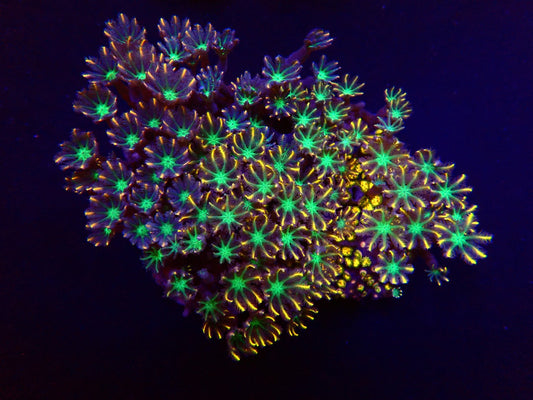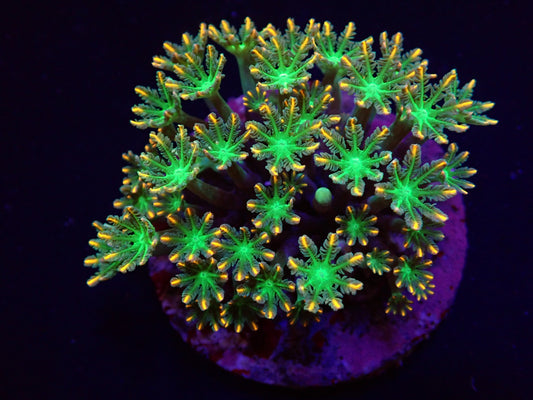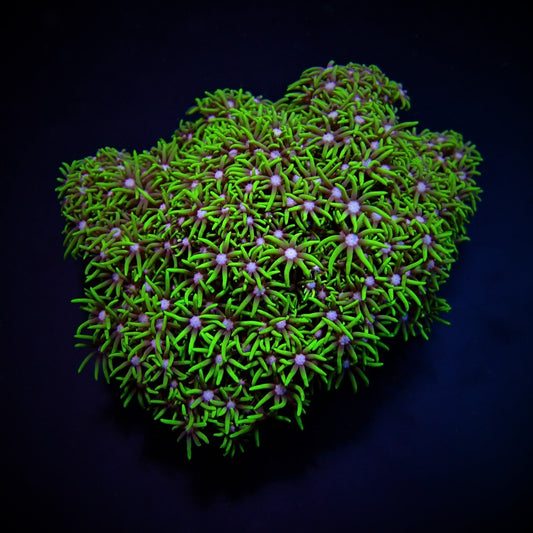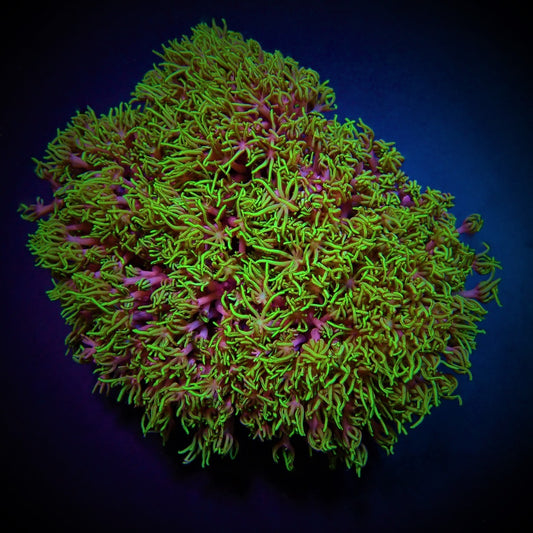Collection: Soft Corals
Soft corals are a group of marine invertebrates that belong to the order Alcyonacea, part of the subclass Octocorallia. Unlike hard corals, which possess a rigid calcium carbonate skeleton, soft corals lack this hard structure and instead have a flexible, leathery body that is supported by small, internal structures called spicules—tiny, needle-like calcareous or siliceous elements. These spicules provide some structural support but do not form a solid skeleton.
Soft corals are often found in tropical and subtropical oceans, typically in shallow waters, though some species can inhabit deeper areas as well. They come in various shapes and sizes, ranging from small, bushy forms to large, tree-like structures. Their colors can vary widely, from soft pastels to vibrant hues of pink, purple, yellow, and orange, and they often exhibit a soft, flowing movement in the water due to currents.
Many soft corals are important contributors to the health of coral reef ecosystems. They provide habitats and shelter for a variety of marine organisms, including fish, invertebrates, and other species. Soft corals also contribute to the biodiversity of reef ecosystems, adding to the complexity of marine habitats. While they do not build the hard, massive reef structures that hard corals do, they still play a crucial role in the ecosystem by creating spaces for various organisms to thrive.
Soft corals include well-known species such as sea fans, sea whips, and leather corals. Some can produce compounds of medical interest, and others have symbiotic relationships with microscopic algae (zooxanthellae), which help them survive in nutrient-poor waters by photosynthesizing. However, like hard corals, they are sensitive to changes in environmental conditions such as water temperature, pollution, and ocean acidification.

-
Clavularia (Orange/striped)
Vendor:Coralreef StoreRegular price From €19,50 EURRegular price -
Capnella spp. (Kenya)
Vendor:Coralreef StoreRegular price From €35,00 EURRegular price -
Capnella spp. (Bali)
Vendor:Coralreef StoreRegular price €89,95 EURRegular price -
Briareum spp. (Grade A)
Vendor:Coralreef StoreRegular price From €5,50 EURRegular price -
Zoanthus spp. (Ultra Grade)
Vendor:Coralreef StoreRegular price €49,95 EURRegular price€0,00 EURSale price €49,95 EUR








